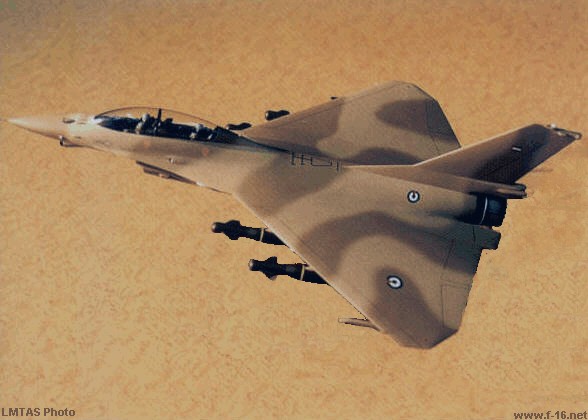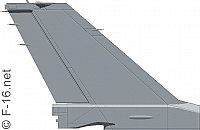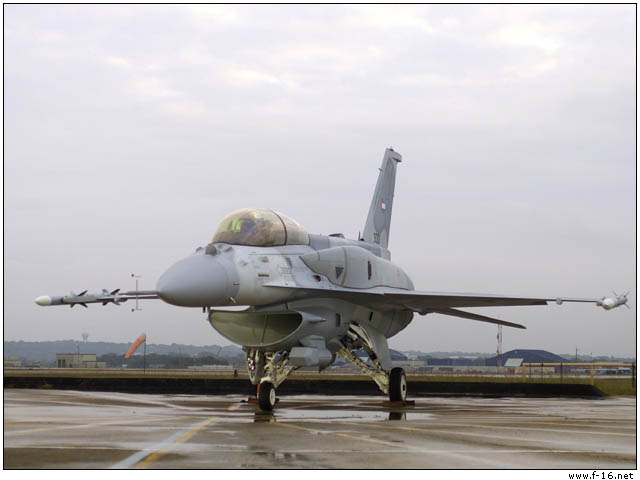History
The Block 60 designation was originally reserved back in 1989. It was to be the F/A-16 which sported a 30 mm cannon and strengthened wing structure for anti-tank weapons such as 7.62 mm min pods. This aircraft was briefly in consideration to replace the A-10 warthog. The "original" Block 60 did not go into production, and its designation basically ends the series of adding another block.

The "new" Block 60 F-16 represents an evolutionary step ahead of the current block 50 aircraft. At first, the Block 60 was developed featuring a delta wing design. Through the development phase, LMTAS altered its strategy and decided to just start from the basic F-16 structure without altering too much on its design.
Structure & Avionics
The Block 60 features an enormous amount of new capabilities. For one thing, the Fighting Falcon Block 60's range is extended with addition of fuselage mounted conformal fuel tanks and wing tanks, similar to the F-16ES and Block 50/52 Plus.Secondly, the Northrop Grumman AN/ASQ-28 IFTS (Internal FLIR and Targeting System) replaces the pods in earlier aircraft. With state-of-the art components and packaging technology, the Internal FLIR Targeting System (IFTS) incorporates an advanced multi-functional FLIR/laser system into the F-16 nose to improve lethality and survivability with lower weight and drag and a laser targeting pod mounted underneath the fuselage. The elimination of bulky pods also enhances stealthiness.
Thirdly, there is an integrated electronic warfare suite with the Northrop Grumman 'Falcon Edge' internal electronic countermeasures system, the Northrop Grumman AN/APG-80 "Agile Beam Radar" with AESA (Active Electronically Scanned Array), an electronic warfare management system, fiber-optic avionics data bus and up to eight chaff/flare dispensers, as well as advanced friend or foe. The aircraft's advanced avionics suite has room available for future improvements. The Block 60's modular mission computer has a processing throughput of 12.5 million instructions per second and provides sensor and weapons integration.
The ALQ-165 electronic countermeasures system, also known as the Airborne Self-Protection Jammer (ASPJ), is a sophisticated, high-power jamming system developed to fulfill both U.S. Navy and Air Force requirements - although the USAF abandonned the program a while ago. Missile warning systems on the Block 60 provide advanced warning of approaching missiles so the pilot can activate countermeasures in time. The Block 60 F-16 can accommodate both active and passive missile warning systems currently under development.
Any F-16 pilot can perform mission tasks with his head up and his eyes looking out of the cockpit and with his hands on the flight controls. The Block 60 adds to this excellent pilot-aircraft interface by incorporating three advanced 5-inch by 7-inch color displays. The aircraft has wiring and space allocated for a helmet-mounted cuing system that can be added to improve pilot situation awareness.
The Block 60 F-16 retains the full armament capability of the Block 50's and adds several new capabilities. The Block 60's basic design and weapon interfaces are compatible with projected future weapons including new air-to-air missiles such as the AIM-132 Advanced Short Range Air-to-Air Missile (ASRAAM). The aircraft will also support all-weather standoff weapons, such as the AGM-154 Joint Standoff Weapon (JSOW), and AGM-84E Standoff Land Attack Missile (SLAM).
The Block 60 F-16 has been developed with planned growth improvements and technology advances in virtually all major areas, including engines, avionics, and weapons.
Production
So far, the Block 60 has only be sold to the United Arab Emirates. The total order stands for 80 aircraft compromising 55 single-seat E-models and 25 double-seat F-models. Deliveries will start in 2004 and run through 2007.
Specifications
Engine: One General Electric F110-GE-132 turbofan, rated at 19,000 lb.s.t. dry and 32,500 lb.s.t. with afterburning.
Performance: Maximum short-endurance speed: Mach 2.02 (1333 mph) at 40,000 feet. Maximum sustained speed Mach 1.89 (1247 mph) at 40,000 feet.
Dimensions: wingspan 31 feet 0 inches, length 49 feet 4 inches, height 16 feet 8 1/2 inches, wing area 300 square feet.
Weights: around 22,000 pounds empty, 29,000 pounds normal loaded (air-to-air mission), 46,000 pounds maximum takeoff.
Special thanks
- Lt. Carl Krittenden
The Block 60's modular mission computer
should be
The Block 60"s Advanced Mission Computer (AMC) -
Please use this form to add any list any error or omissions you find in the above text.
Note: your comments will be displayed immediately on this page. If you wish to send a private comment to the webmasters, please use the Contact Us link.


